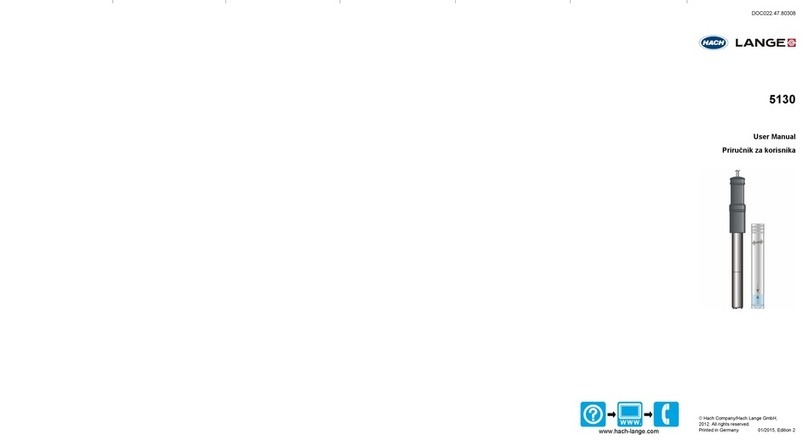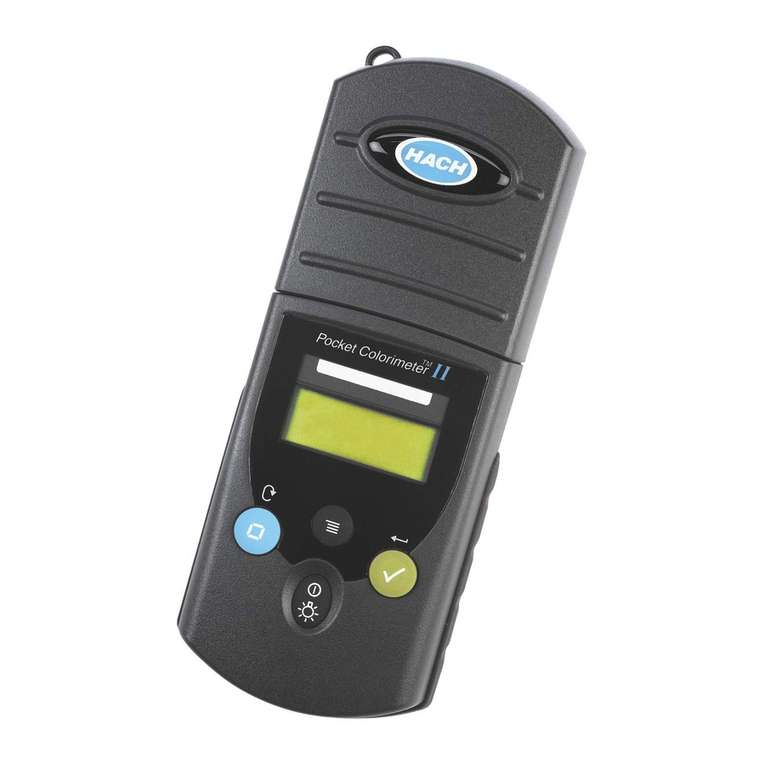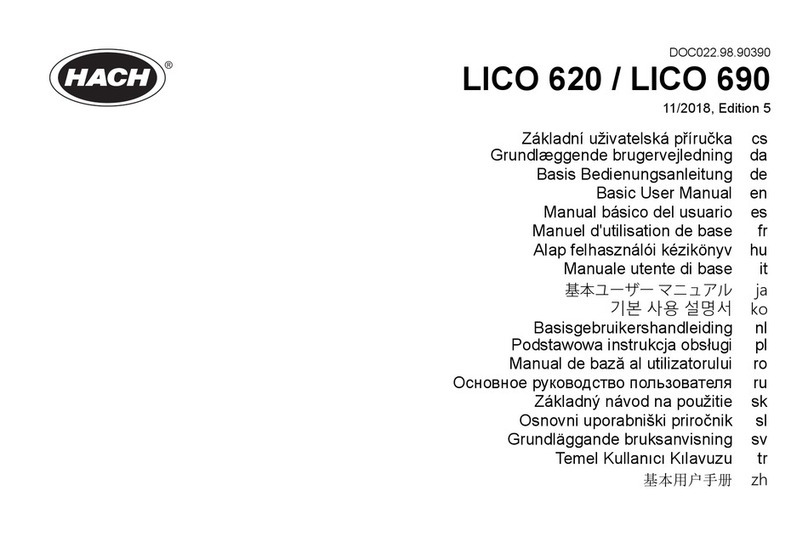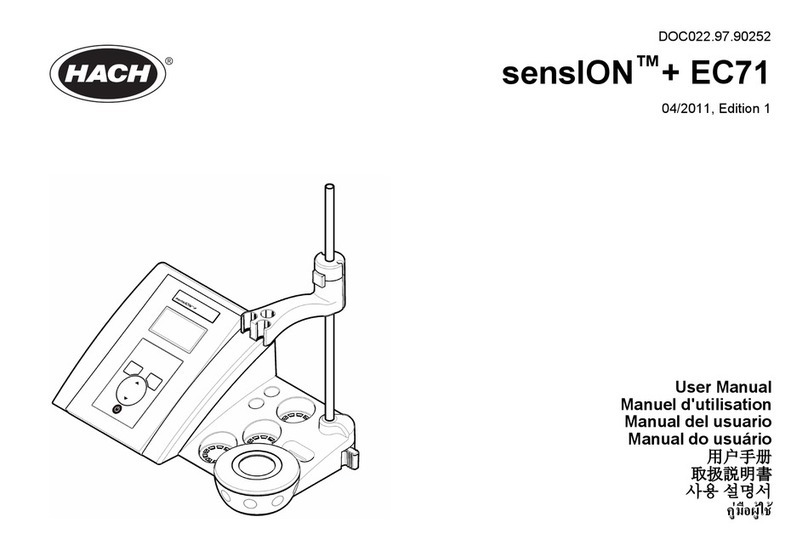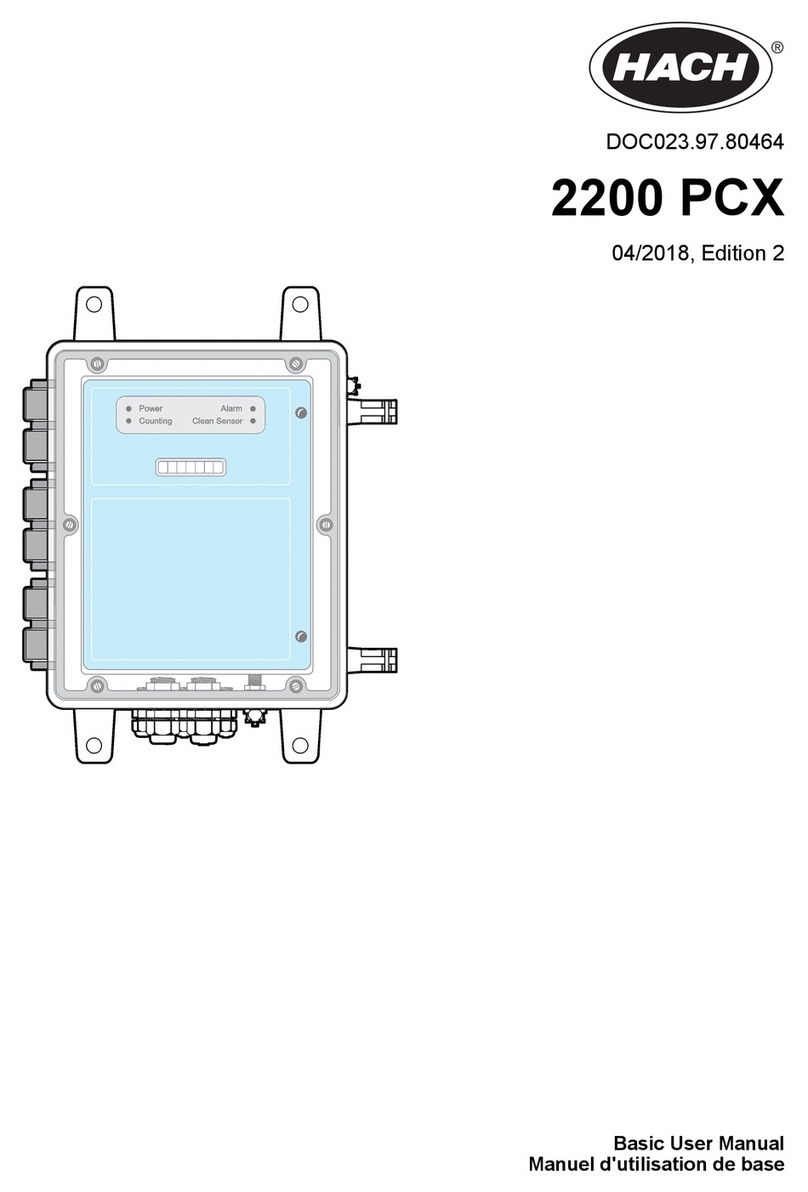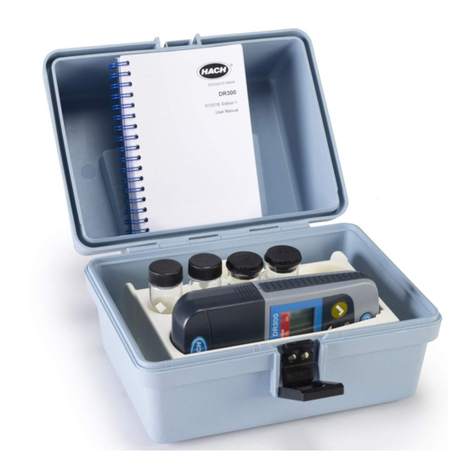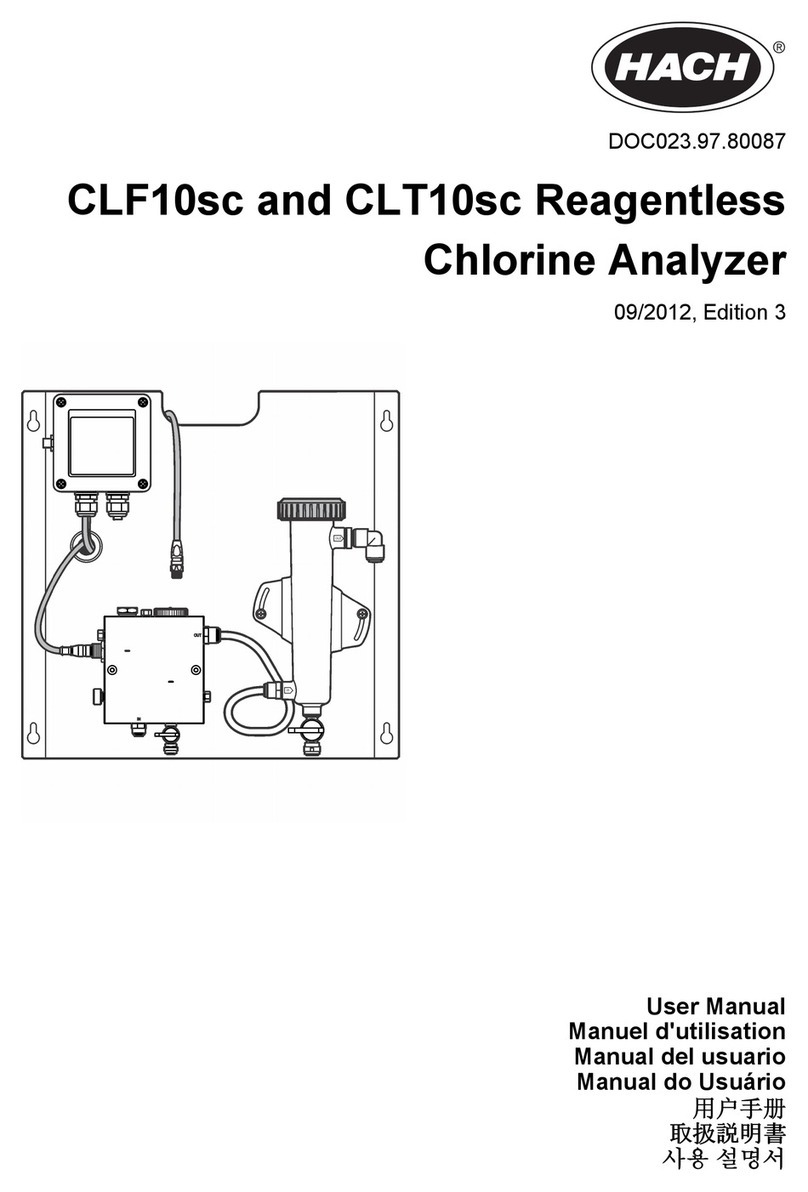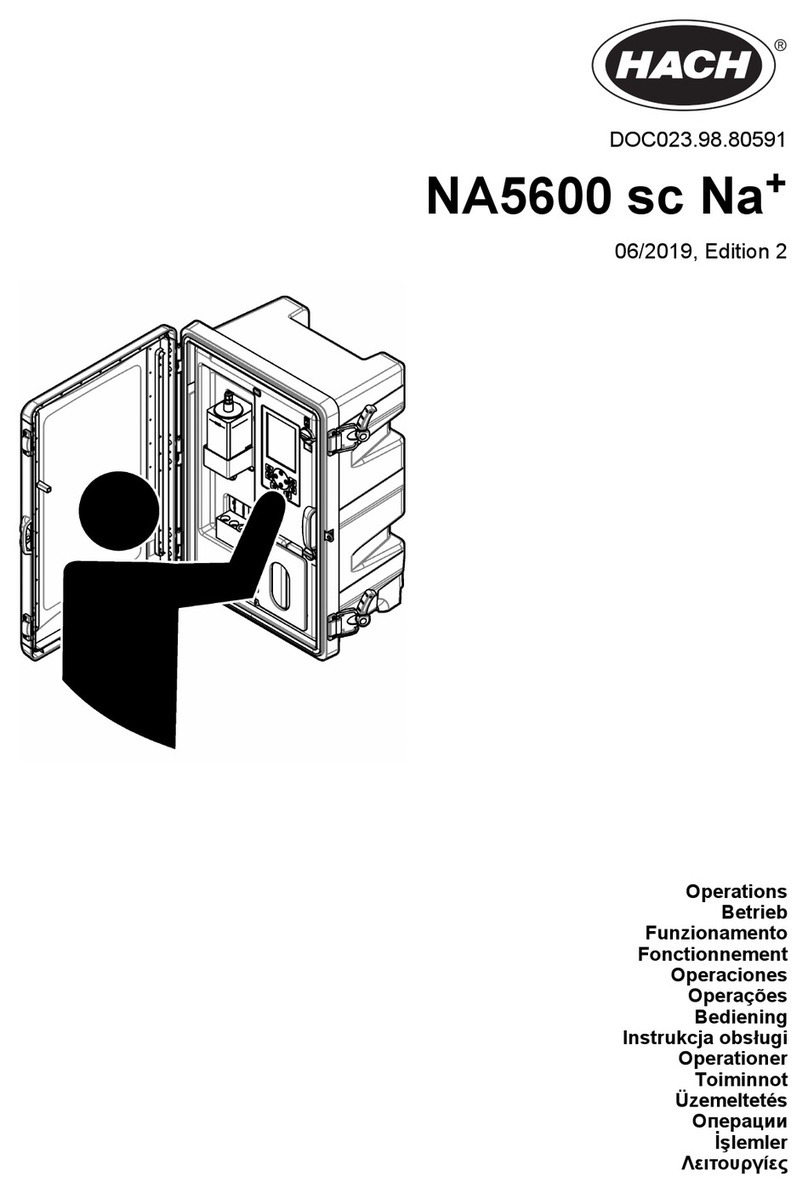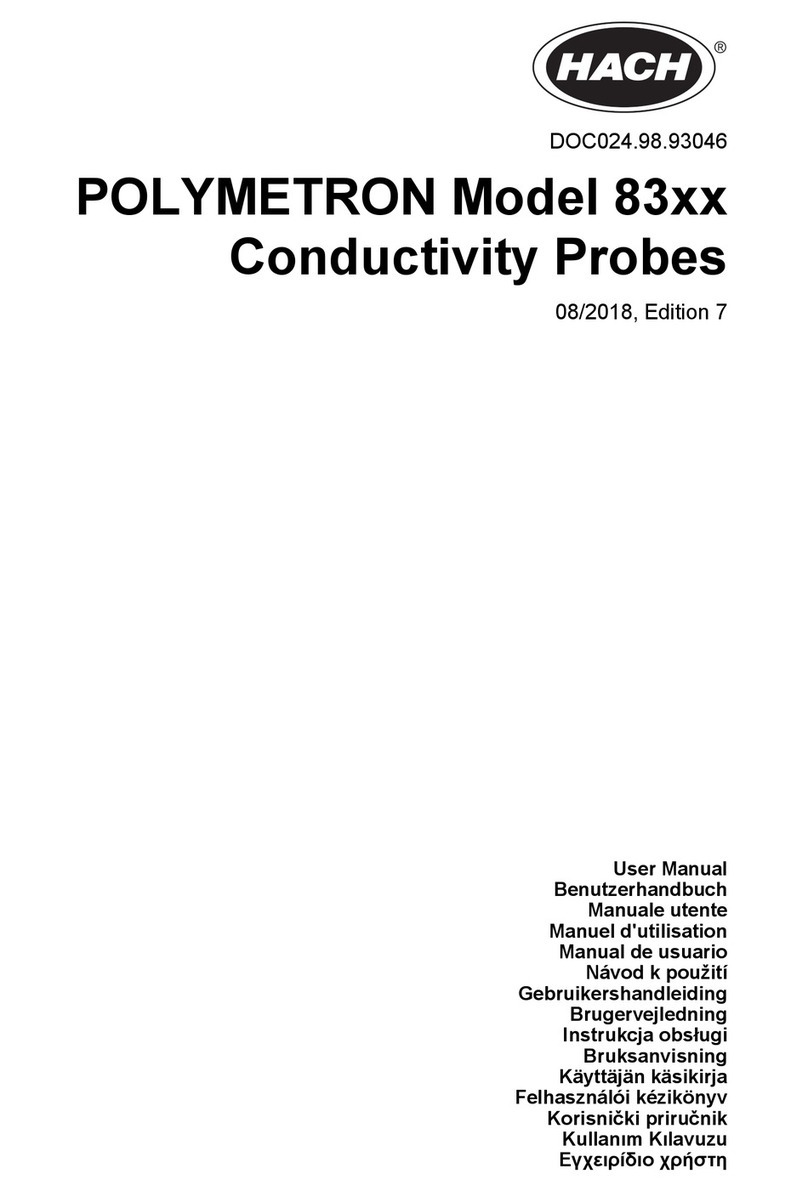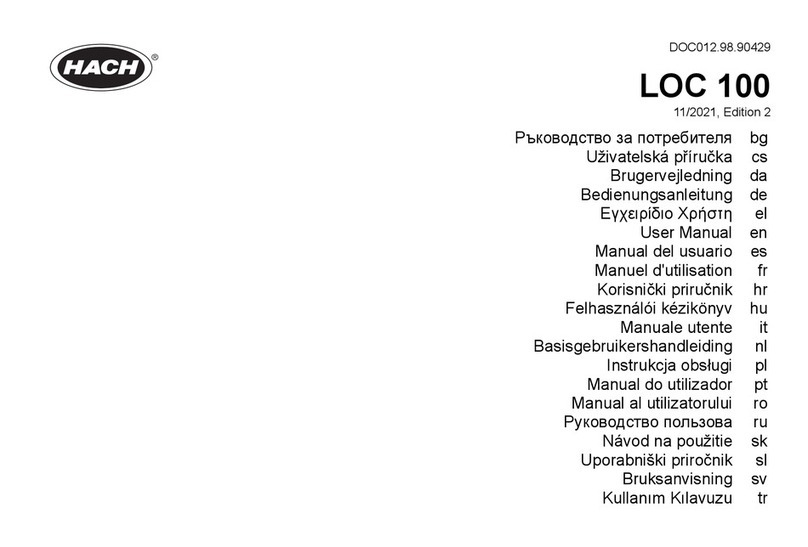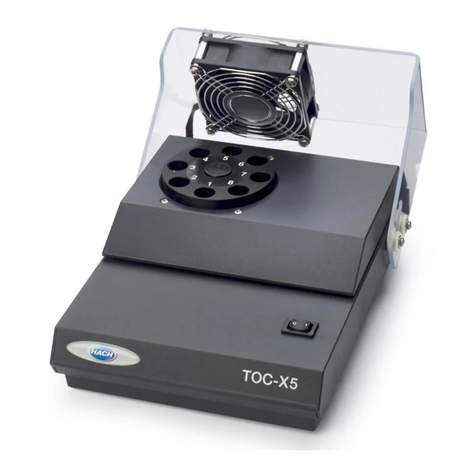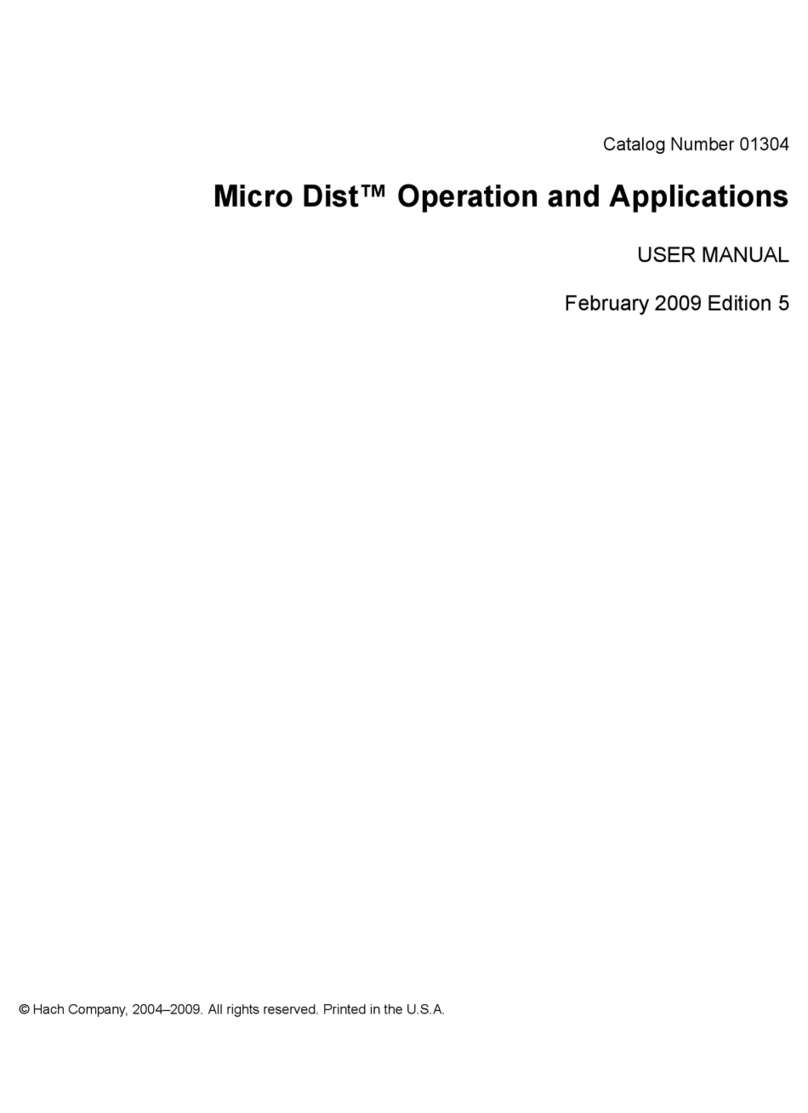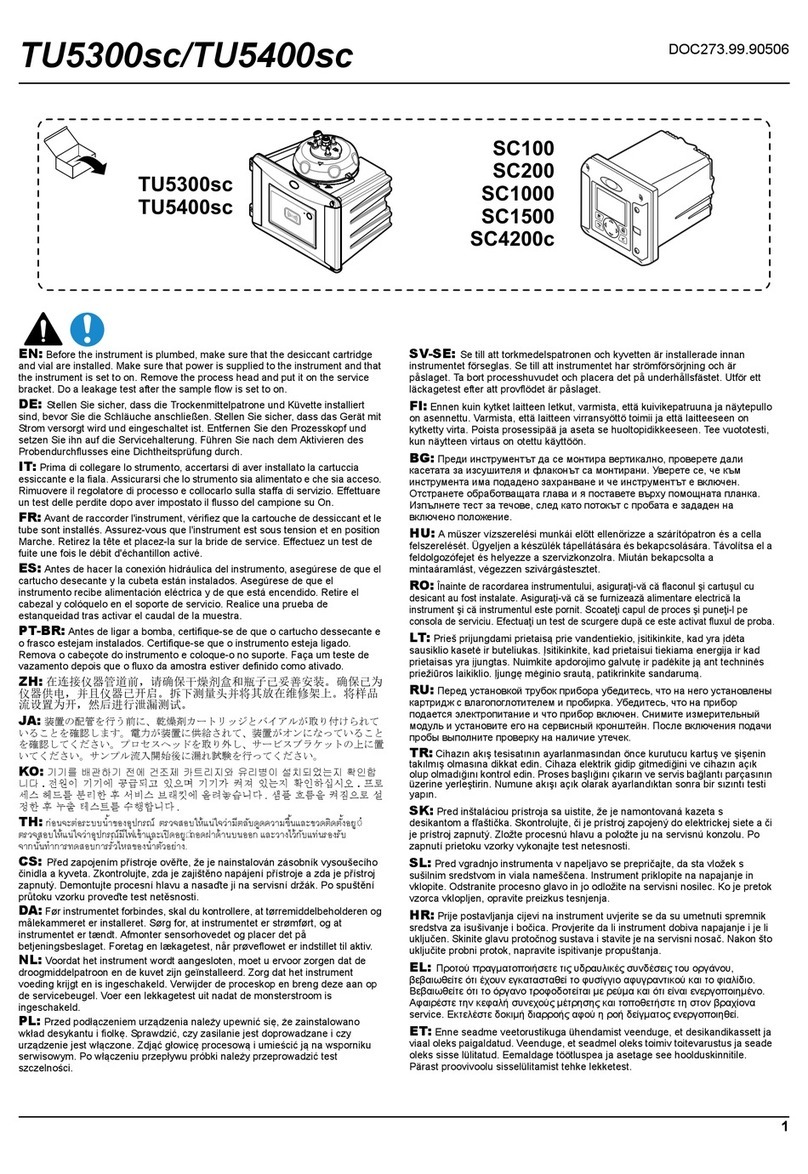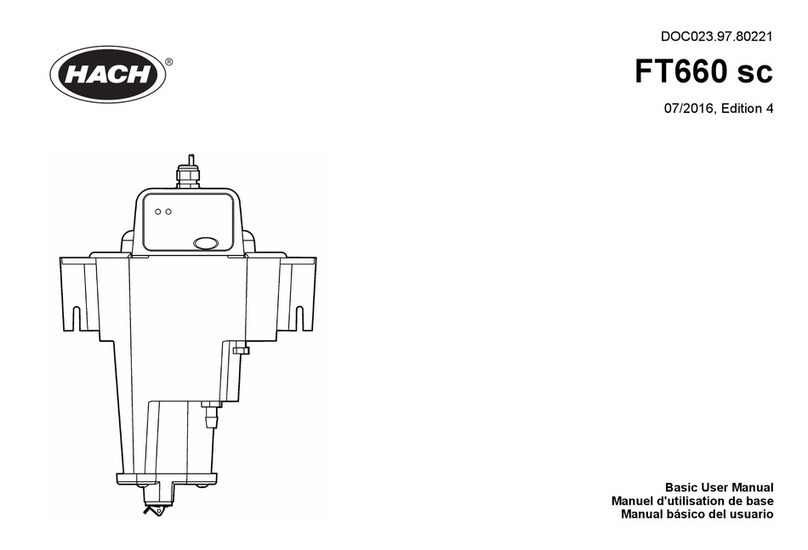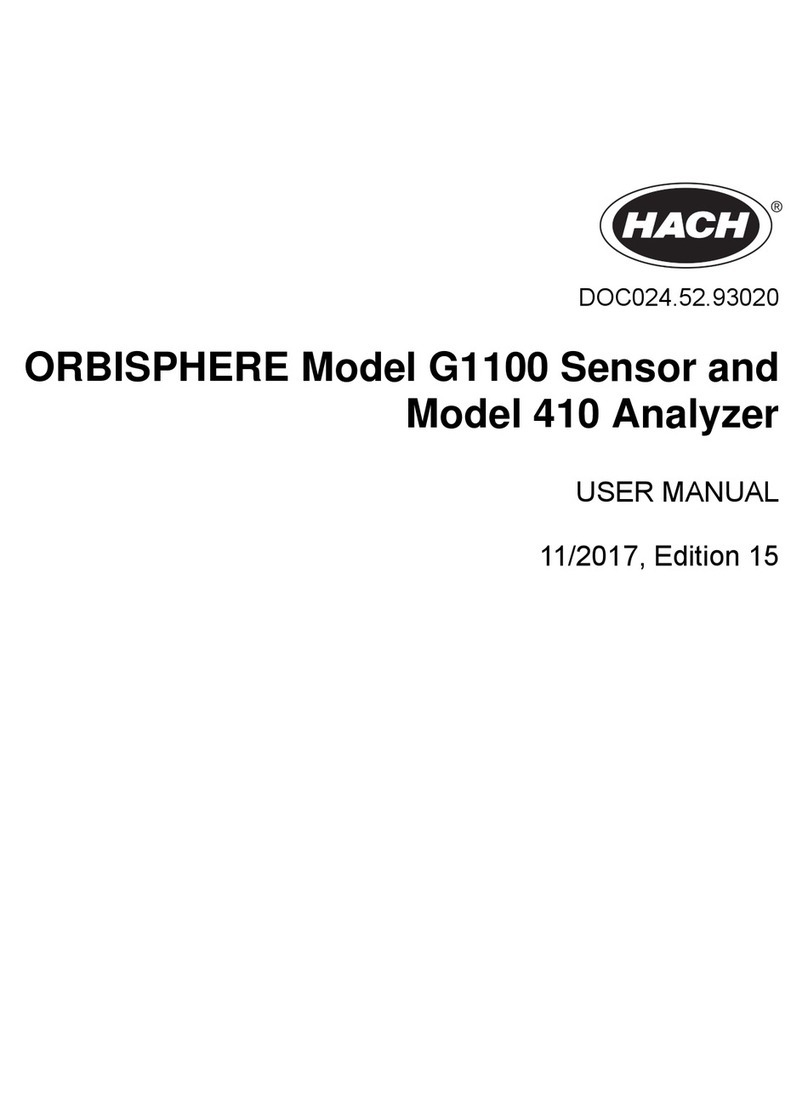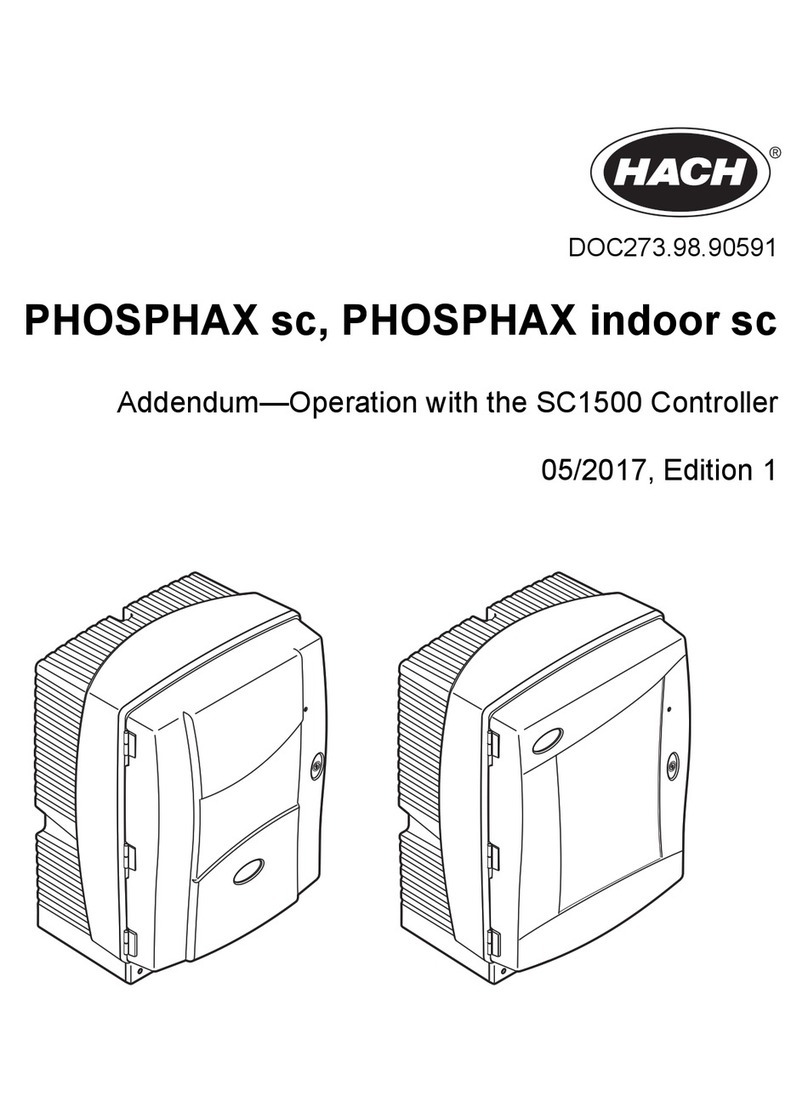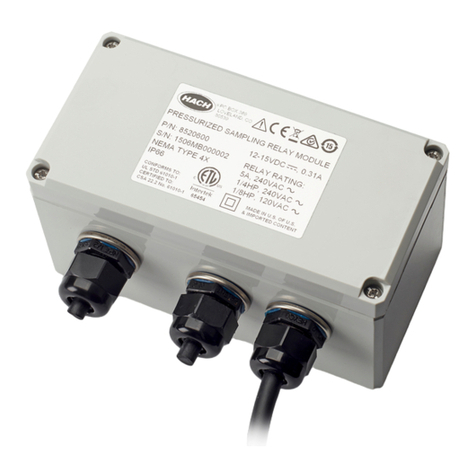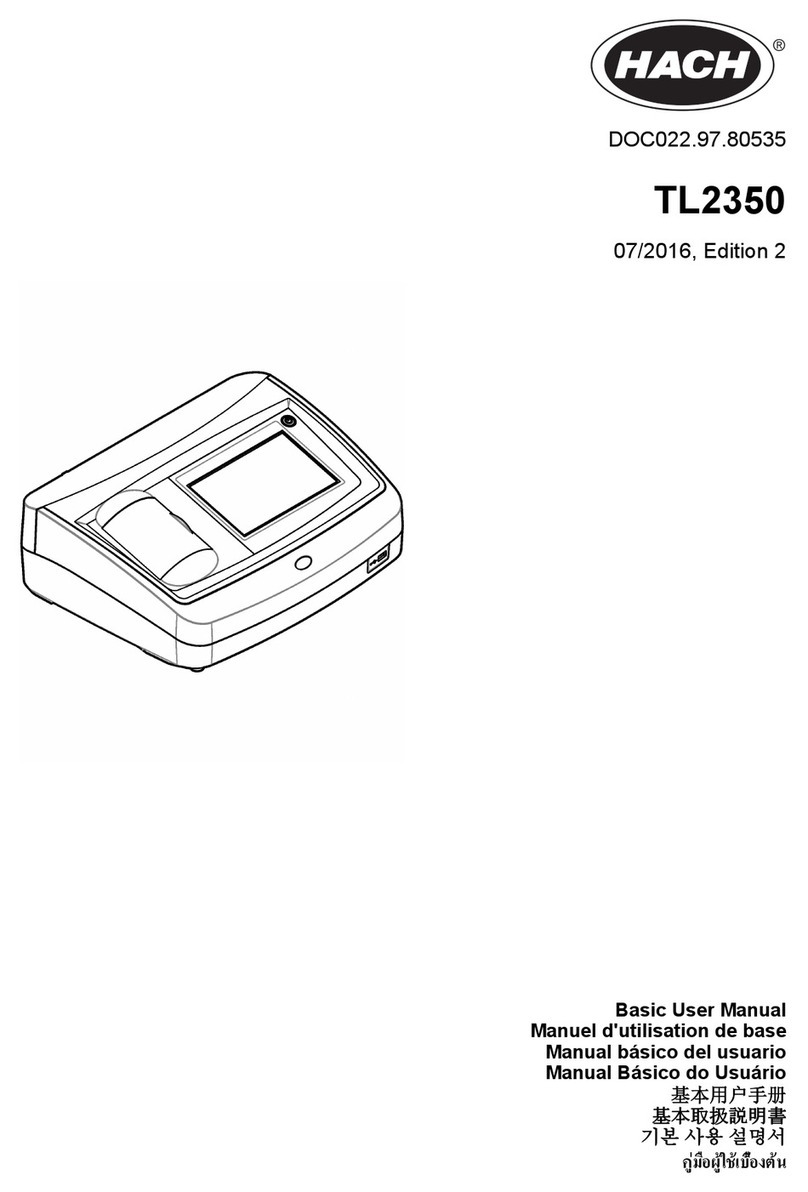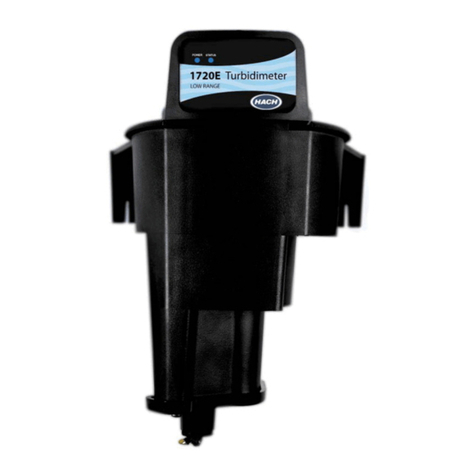
Specification Details
Stabilization time Immediately
Reading modes Single, continuous, Rapidly Settling Turbidity™, signal averaging on or off
Communication USB
Interface 2 USB-A ports for USB flash drive, external printer, keyboard and barcode scanner
Datalog Maximum 2000 total logs, includes reading log, verification log and calibration log
Air purge Dry nitrogen or instrument grade air (ANSI MC 11.1, 1975)
0.1 scfm at 69 kPa (10 psig); 138 kPa (20 psig) maximum
Hose barb connection for 1/8-inch tubing
Sample cells Round cells 95 x 25 mm (3.74 x 1 in.) borosilicate glass with rubber-lined screw caps
Note: Smaller sample cells (less than 25 mm) can be used when a cell adapter is used.
Sample requirements 25 mm sample cell: 20 mL minimum
0 to 70 °C (32 to 158 °F)
Certification CE, KC, RCM
Warranty 1 year (EU: 2 years)
General information
In no event will the manufacturer be liable for direct, indirect, special, incidental or consequential
damages resulting from any defect or omission in this manual. The manufacturer reserves the right to
make changes in this manual and the products it describes at any time, without notice or obligation.
Revised editions are found on the manufacturer’s website.
Additional information
Additional information is available on the manufacturer's website.
Safety information
N O T I C E
The manufacturer is not responsible for any damages due to misapplication or misuse of this product including,
without limitation, direct, incidental and consequential damages, and disclaims such damages to the full extent
permitted under applicable law. The user is solely responsible to identify critical application risks and install
appropriate mechanisms to protect processes during a possible equipment malfunction.
Please read this entire manual before unpacking, setting up or operating this equipment. Pay
attention to all danger and caution statements. Failure to do so could result in serious injury to the
operator or damage to the equipment.
Make sure that the protection provided by this equipment is not impaired. Do not use or install this
equipment in any manner other than that specified in this manual.
Use of hazard information
D A N G E R
Indicates a potentially or imminently hazardous situation which, if not avoided, will result in death or serious injury.
WARNING
Indicates a potentially or imminently hazardous situation which, if not avoided, could result in death or serious
injury.
CAUTION
Indicates a potentially hazardous situation that may result in minor or moderate injury.
4 English
